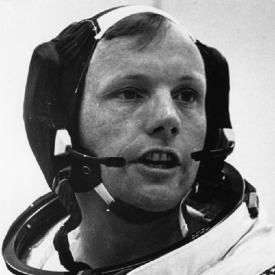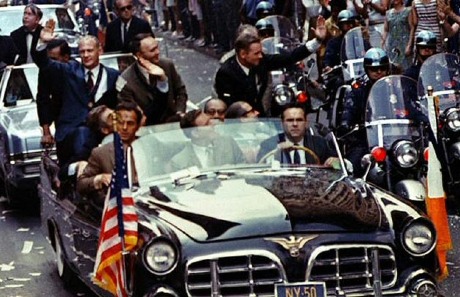 The following are excerpts from Craig Nelson’s awesome book Rocketmen describing the role the late Neil Armstrong played as commander of the spacecraft Eagle which landed him and Edwin “Buzz” Aldrin on the Moon in 1969 while crew member Mike Collins remained in orbit in their Command Module mothership above.
The following are excerpts from Craig Nelson’s awesome book Rocketmen describing the role the late Neil Armstrong played as commander of the spacecraft Eagle which landed him and Edwin “Buzz” Aldrin on the Moon in 1969 while crew member Mike Collins remained in orbit in their Command Module mothership above.
Eagle fell to an altitude of ten miles, and then fired its rockets to slow itself out of orbit and into descent. The craft’s computer used its landing radar (the Primary Navigation, Guidance, and Control System, PNGS or “pings”) to drop to around five hundred feet, at which point the Raytheon computer commanded Eagle to gimbal its rocket and fire its thrusters to approach the Sea of Tranquility portholes down, so that the ship’s commander could assess the terrain. If Armstrong decided that the computer’s designated target site was unacceptable, he could use the ship’s landing radar — the Abort Guidance System, AGS or “aggs” — to land the [Lunar Module (LM)] himself. This was considered the most difficult piloting job ever: flying a craft different from anything ever built, using controls devised from scratch, in one sixth gravity, with no atmosphere, on a landscape whose features weren’t known, and only enough fuel for one attempt.
[…]
Neil Armstrong: “As we dropped below a thousand feet, it was quite obvious that the system was attempting to land in an undesirable area in a boulder field surrounding [West] Crater. I was surprised by the size of these boulders; some of them were as big as small motorcars. And it seemed at the time that we were coming up on them pretty fast […]â€
At some point Armstrong took manual control of the LM and started to pilot the craft in the last minutes of its descent.
“As we approached the ground, I still had a left translational rate which made me reluctant to shut the engines off while I still had that rate. I was also reluctant to slow down my descent rate any more than it was, or stop [the descent], because we were close to running out of fuel. We were hitting our abort limit.”
In the final moments, Armstrong related the agonizing decision he alone had to make…
| SUPPORT INDEPENDENT SOCIAL COMMENTARY! Subscribe to our Substack community GRP Insider to receive by email our in-depth free weekly newsletter. Subscribe to our Substack newsletter, GRP Insider! Learn more |
“I had changed my mind many times, looking for a parking place. Something would look good, and then as we got closer it really wasn’t so good. Finally, we found an area ringed on one side by a boulder field; it wasn’t particularly big, a couple of hundred square feet — about the size of a big house lot.”
The landing, as we of course know today, was successful and those tense moments had a Hollywood happy ending…
[Apollo Flight Director Gene] Kranz: “We have a three-foot-long probe stick underneath each of the landing pads. When one of those touches the lunar surface, it turns on a blue light in the cockpit, and when it turns on that blue light, that’s lunar contact, [the LM crew’s] job is to shut the engine down, and they literally fall the last three feet to the surface of the Moon.”
[…]
Neil Armstrong: “I was absolutely dumbfounded when I shut the rocket engine off and the particles that were going out radially from the bottom of the engine fell all the way out over the horizon, they just raced out over the horizon and instantaneously disappeared, you know, just like it had been shut off for a week. It was remarkable. I’d never seen that. I’d never seen anything like that. And logic says, yes, that’s the way it ought to be there, but I hadn’t thought about it and I was surprised.”
Armstrong was referring to the way clouds of dust, in an environment where there is no atmosphere, do not linger around suspended when thrown up but drop immediately to the ground like any other heavy object subject to gravity.

[Photo courtesy Wikipedia.]
benign0 is the Webmaster of GetRealPhilippines.com.
Even during the test runs here on Earth Mr. Armstrong has shown remarkable situational awareness and piloting skills… His quick brush with death while making simulated moon landings on the LLRV (Lunar Landing Research Vehicle) on May 6 of 1968 is proof. Watch the link below to see how much of a testament it is to the man’s reflexes:
Great video!
Proof positive that the man’s got the moxie to handle the tricky (and erstwhile dangerous) make or break maneuver to land on the surface of the moon.
For juicy well-known, (and also not so well-known) facts about the Space Race, here’s a page I personally recommend from Facebook:
https://www.facebook.com/space.race.timeline